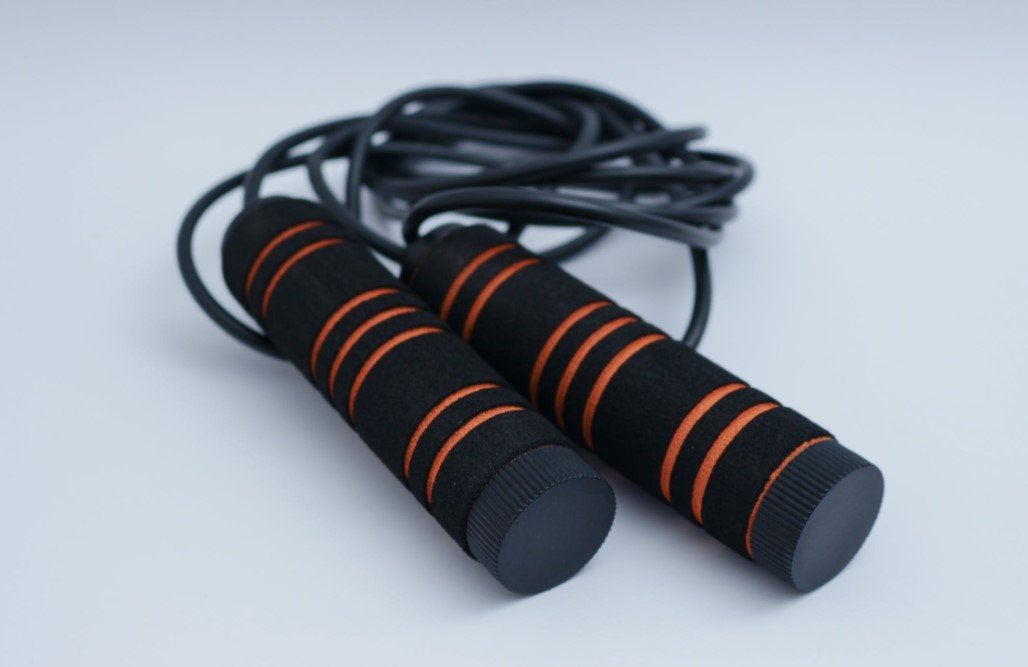Are you looking for a simple, affordable, and incredibly effective way to lose weight? Rope skipping is your answer. This classic cardio exercise requires just one piece of equipment and can be done almost anywhere. It helps you burn calories quickly, improves your heart health, and boosts your overall fitness. This guide will show you exactly how to get started and blend skipping into your workout for the best results.
Why Choose Rope Skipping for Weight Loss?
Rope skipping is more than just a playground activity; it’s a powerhouse workout. Many people choose it because it is highly efficient and accessible. You don’t need a gym membership or expensive gear to begin your journey.
One of the biggest advantages is its calorie-burning potential. According to some studies, just 10 minutes of jumping rope can burn as many calories as a 30-minute jog. This makes it a perfect choice for people with busy schedules who want to maximize their workout time.
Beyond weight loss, jumping rope is fantastic for your cardiovascular system. It strengthens your heart and improves your aerobic capacity, which means you’ll have more stamina for all your daily activities. It also enhances coordination, balance, and agility.
Understanding Your Skipping Intensity Levels
To get the most out of your workouts, it’s important to understand different intensity levels. This allows you to tailor your sessions to your fitness goals, whether you’re warming up, burning fat, or building endurance. Listening to your body and monitoring your heart rate are key.
Varying your intensity not only prevents boredom but also challenges your body in new ways, a principle known as muscle confusion. This can help you break through weight loss plateaus and continue making progress. Start with low intensity and gradually work your way up as you get fitter.
Here is a simple breakdown to help you identify which level you are working at:
| Intensity Level | Heart Rate (BPM) | How It Feels |
|---|---|---|
| Low-Intensity | Under 135 bpm | Easy to hold a full conversation. A steady, comfortable pace. |
| Medium-Intensity | 135-160 bpm | Conversation becomes difficult. You’re breathing harder. |
| High-Intensity | Over 160 bpm | Impossible to talk. You are breathing very heavily and can only maintain the pace for a short time. |
Using a simple fitness tracker can help you monitor your heart rate, but you can also gauge the intensity by how easily you can speak.
Creating Your First Rope Skipping Workout Plan
Starting a new exercise routine can feel intimidating, but a simple plan makes it easy. The goal for beginners is to build consistency and proper form before worrying about speed or complex moves.
Your primary focus should be on creating a habit. Don’t push yourself too hard in the beginning, as this can lead to injury or burnout. A short, daily session is more effective than one long, exhausting workout per week.
Here is a basic rollout plan to get you started:
- Week 1: Focus on Form. Jump for 1 minute, then rest for 1 minute. Repeat this cycle 5 times. Concentrate on keeping your jumps low and turning the rope with your wrists, not your whole arms.
- Week 2: Build Endurance. Increase your jump time to 2 minutes, followed by 1 minute of rest. Repeat the cycle 5 times.
- Week 3: Increase Intensity. Try jumping for 3 minutes straight, followed by 1 minute of rest. Aim for 4-5 cycles. You can also start to pick up the pace slightly during your jump intervals.
- Week 4 and Beyond: Mix It Up. Start incorporating medium and high-intensity intervals into your routine. For example, jump at a low intensity for 2 minutes, then a medium intensity for 1 minute.
How to Integrate Skipping into Your Current Routine
The versatility of rope skipping is one of its greatest strengths. You don’t have to build your entire workout around it. Instead, you can easily add it to your existing fitness plan to boost your results and keep things interesting.
One of the best ways to use a skipping rope is as a warm-up tool. A simple 5-minute session of low-intensity skipping is enough to raise your heart rate, warm up your muscles, and prepare your body for more strenuous exercises like weightlifting or running. This helps prevent injuries and improves your performance.
Alternatively, you can use skipping as a form of active recovery. Instead of just sitting down between your sets of squats or push-ups, try 30-60 seconds of light skipping. This keeps your heart rate elevated, which can increase the overall calorie burn of your workout.
Powerful Exercises to Combine with Rope Skipping
Combining rope skipping with bodyweight exercises creates a well-rounded, full-body workout. This approach builds strength while you burn fat, helping you achieve a toned and athletic physique. The key is to choose exercises that target different muscle groups.
Here are three simple yet effective exercises you can blend with your skipping sessions:
- Plank: This is an excellent exercise for core strength. It targets your abs, back, and shoulders. Simply hold a push-up position, keeping your body in a straight line from your head to your heels. Start by holding for 30 seconds.
- Push-Ups: A classic move for building upper-body strength. Push-ups work your chest, shoulders, and triceps. Ensure you maintain a straight back and lower your body until your chest is close to the floor.
- Sit-Ups: Ideal for targeting your abdominal muscles. Lie on your back with your knees bent and feet flat on the floor. Cross your arms over your chest and lift your upper body towards your knees.
A great way to structure this is in a circuit. For example, you could jump rope for 2 minutes, do 30 seconds of planks, jump for another 2 minutes, and then do 10-15 push-ups.
Choosing the Right Skipping Rope
While any rope can get you started, selecting the right one can make your workouts more comfortable and effective. There are different types of ropes designed for various purposes, from basic fitness to advanced speed training.
For beginners, a basic PVC or beaded rope is a great starting point. They are durable, affordable, and have a moderate weight that provides good feedback, making it easier to learn timing and rhythm.
As you advance, you might consider a speed rope, which is lighter and thinner, allowing for faster rotations. For those looking to build strength, weighted ropes add resistance to challenge your arms and shoulders. The most important factor is length; when you stand on the middle of the rope, the handles should reach your armpits.
Frequently Asked Questions about Rope Skipping
How long should I jump rope to lose weight?
For effective weight loss, aim for 20-30 minutes of rope skipping, 3 to 5 times per week. You can break this up into shorter intervals throughout the day if you are short on time. Consistency is more important than the length of a single session.
Is jumping rope every day a good idea?
Jumping rope every day can be beneficial, but it’s crucial to listen to your body. If you are a beginner, start with every other day to allow your muscles and joints to recover. As you get stronger, you can gradually increase the frequency.
Can jumping rope help me lose belly fat?
While you cannot target fat loss in one specific area, jumping rope is a high-calorie-burning exercise that contributes to overall fat reduction. When combined with a healthy diet and strength training, it can effectively help you reduce body fat, including from the belly area.
What is better for weight loss, running or jumping rope?
Both are excellent cardio exercises for weight loss. Rope skipping often burns more calories in a shorter amount of time and is a lower-impact activity on your knees compared to running on hard surfaces. The best choice depends on your personal preference and what you will stick with long-term.
What are the common mistakes to avoid when skipping rope?
Common mistakes include jumping too high, using your entire arms instead of just your wrists to turn the rope, and having a rope that is the wrong length. Keep your jumps low to the ground and maintain a relaxed, upright posture to be more efficient and avoid injury.









Leave a Comment